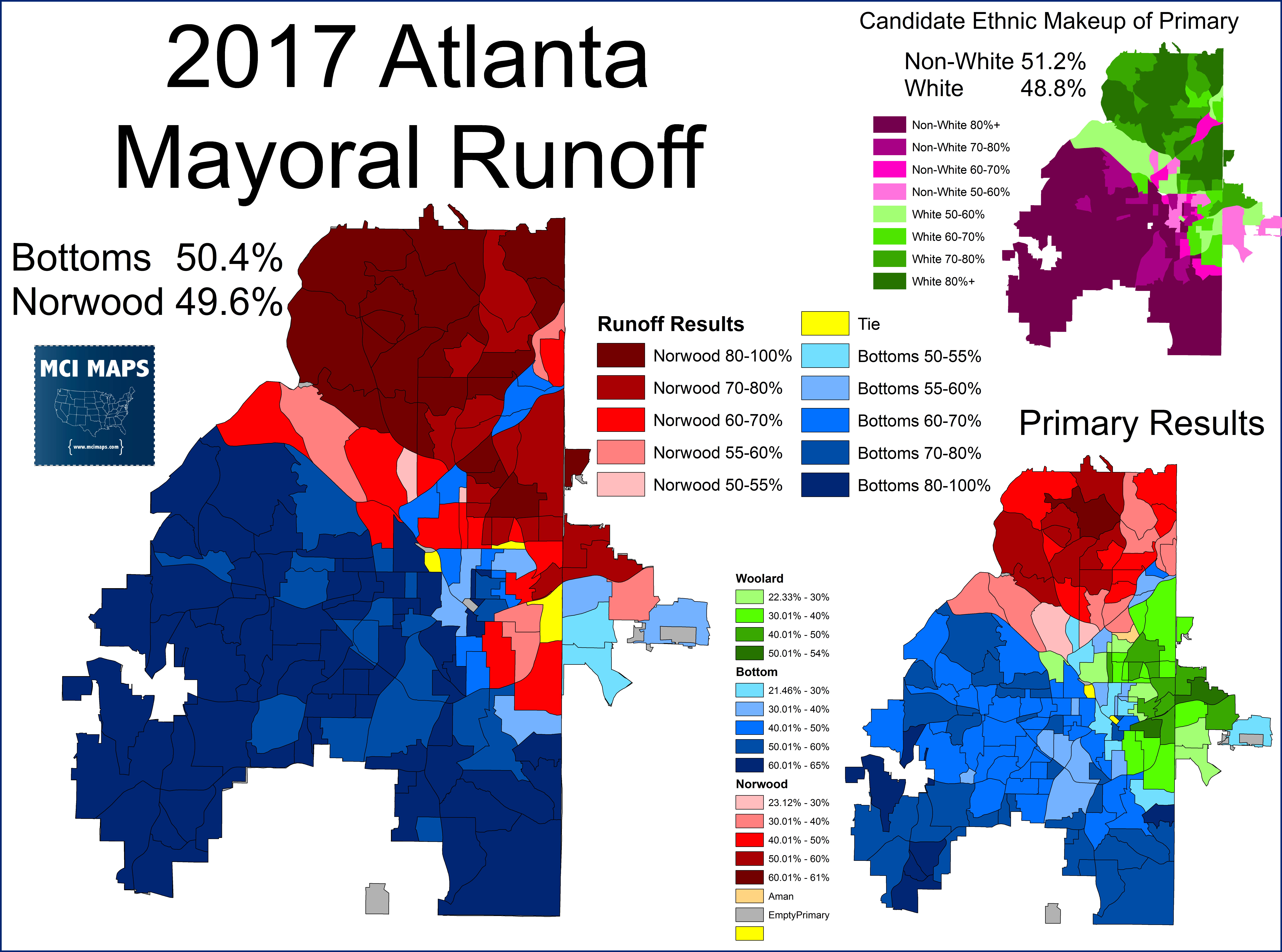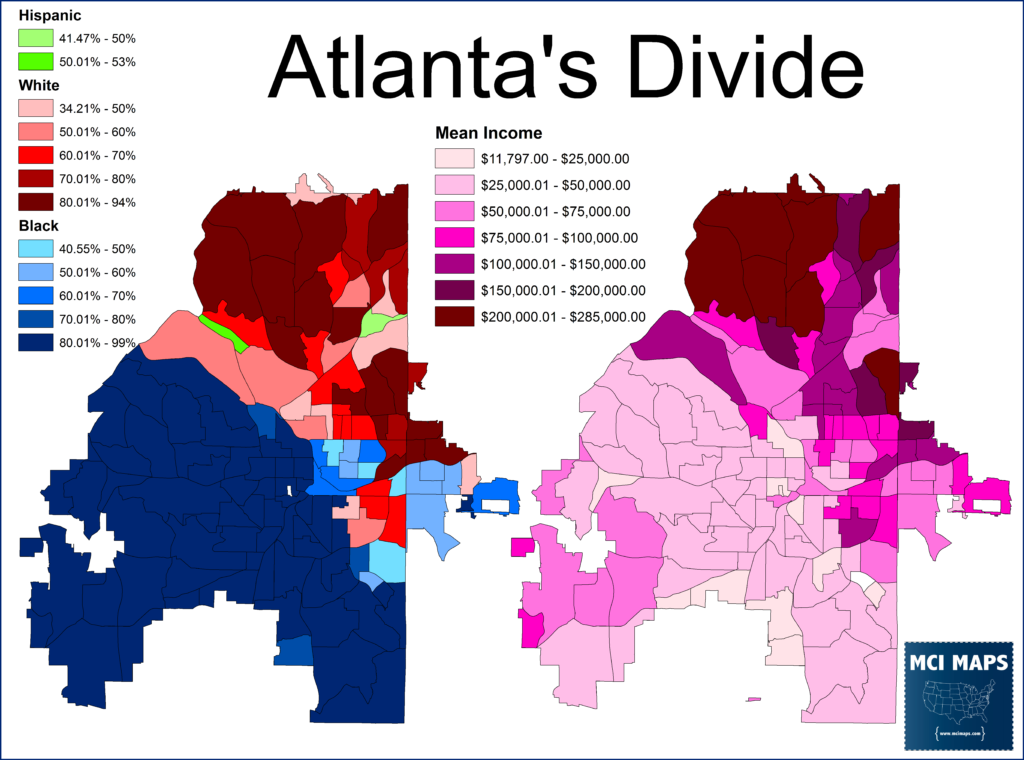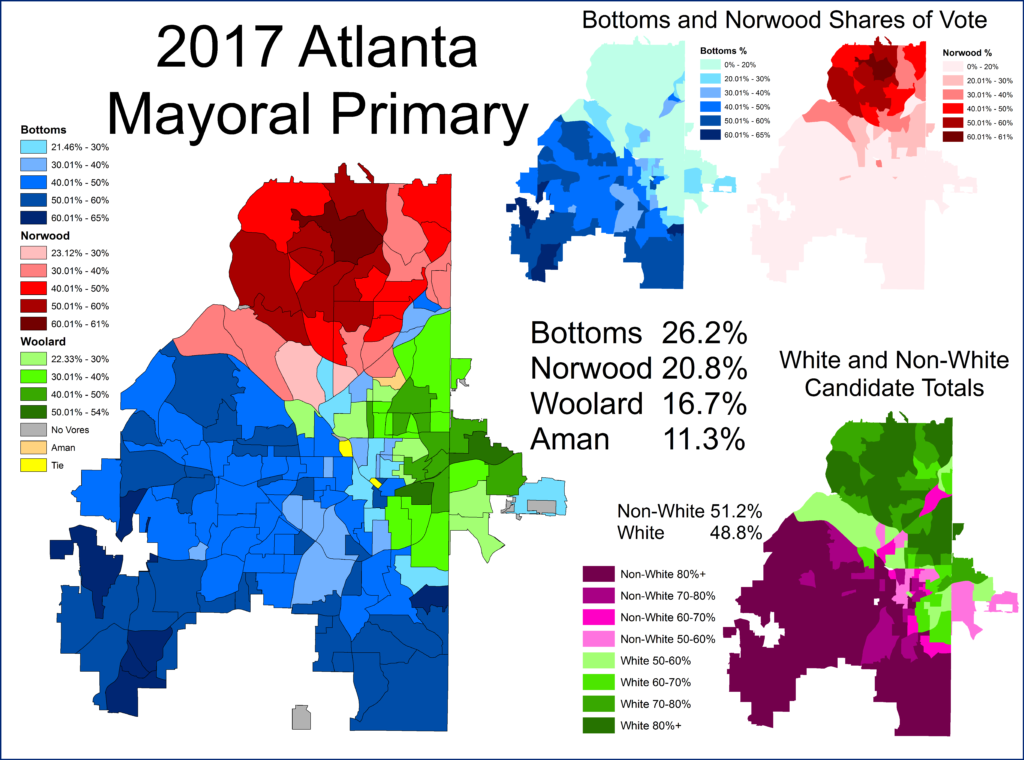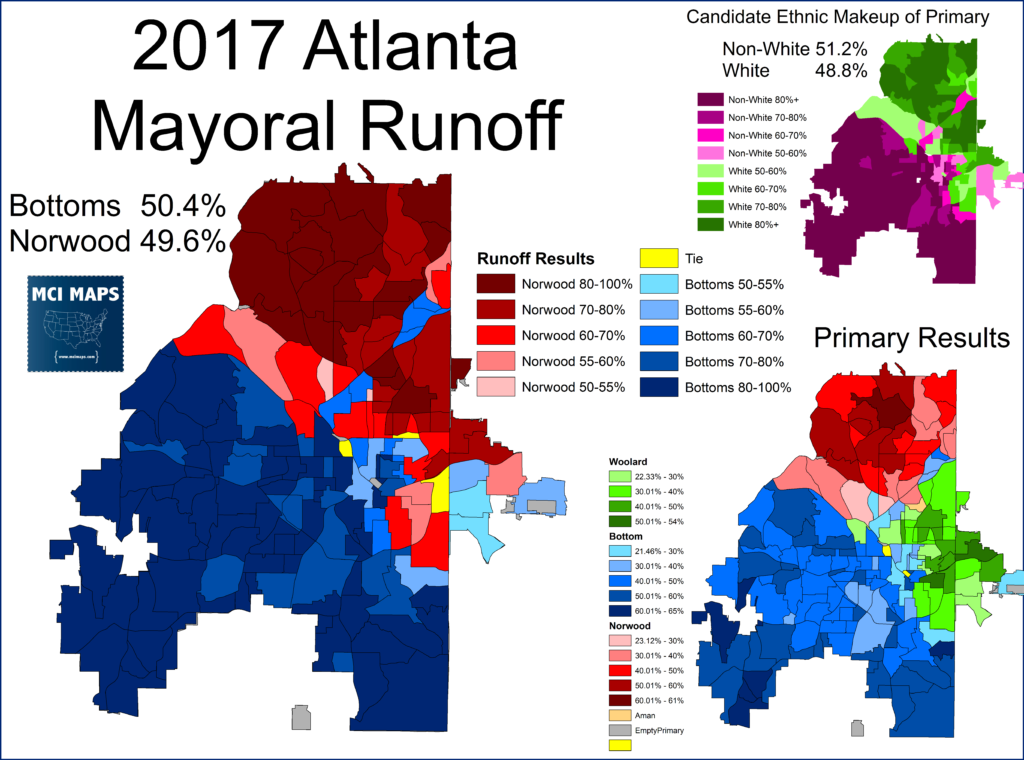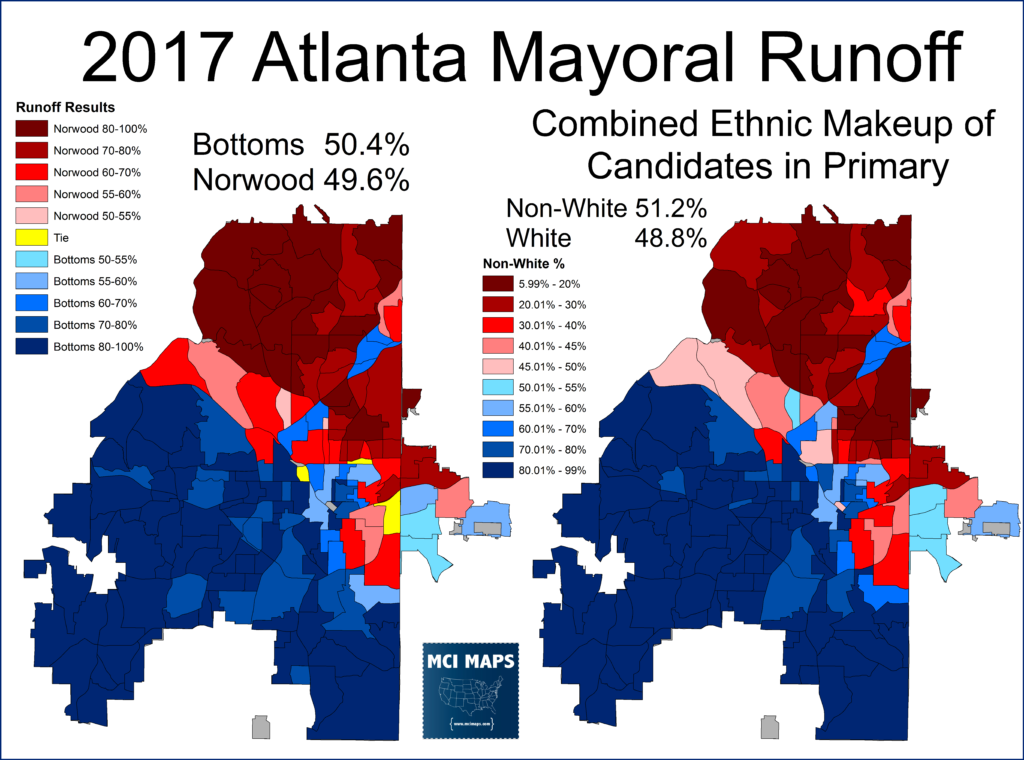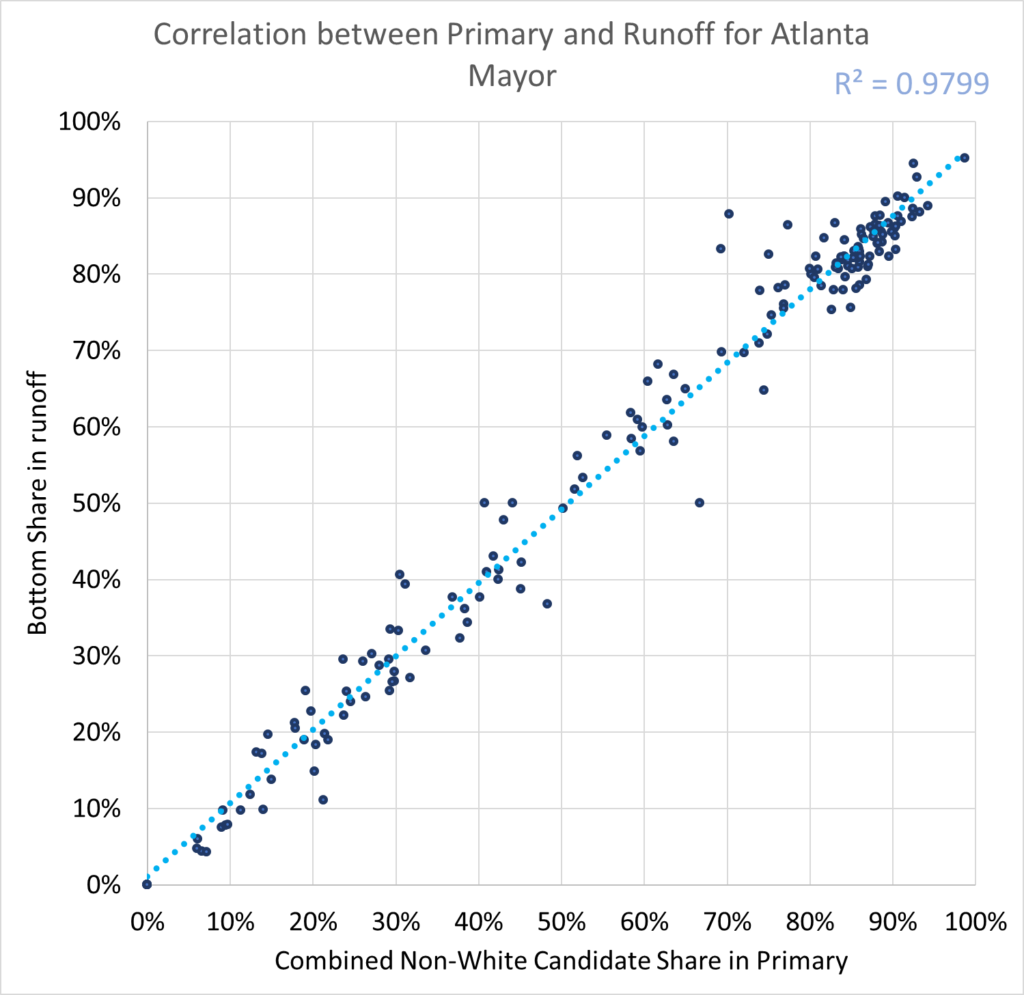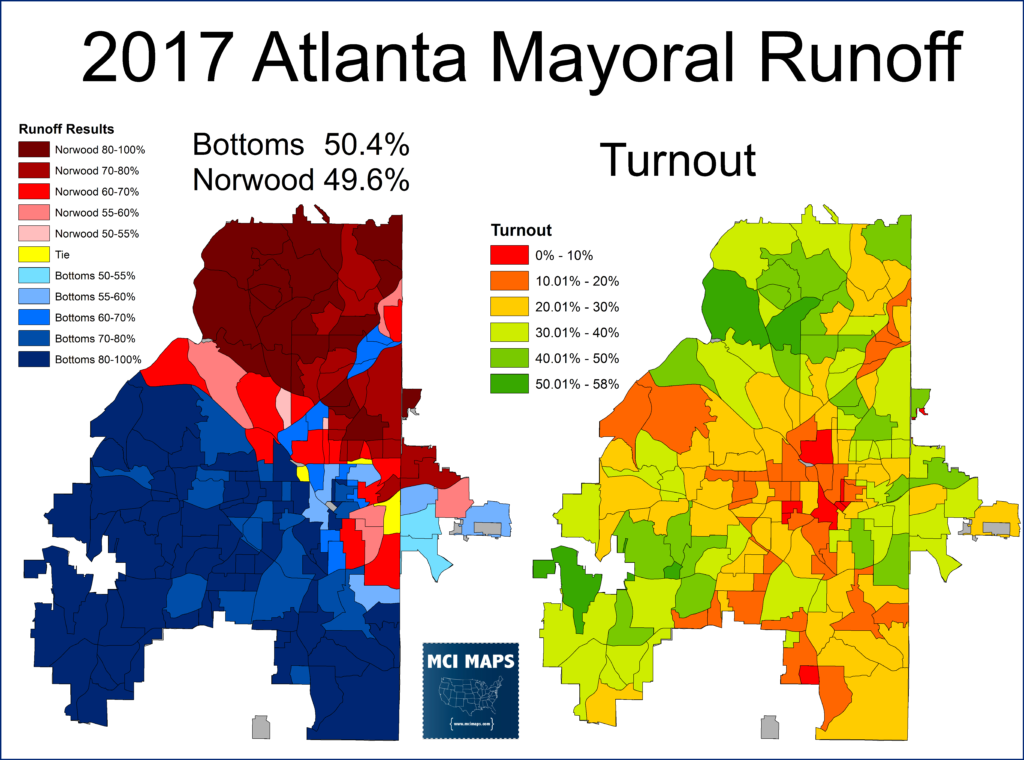Atlanta is a city starkly divided. This is no surprise to its residents but the extend of the divide may come as a shock to those less familiar with the area. The city is split between its affluent white North and its poorer, African-American south.
Once a heavily majority African-American city, considered a “Black Mecca” of the South, the city is growing more racially split; which is spilling into its politics. African-Americans that gain economic success have been moving out of the city and into the growing suburbs of the Atlanta Metro Zone. The fall in African-Americans and the growth of white residents has result in a quick collapse of the African-American share of the city.
This demographic shift has resulted in white politicians, long accepting they would not win the office of Mayor, seeing a opening. In 2009, Mary Norwood, an independent white city councilwoman, narrowly lost the Mayoral election by 700 votes to African-American Democrat Kasim Reed. Norwood decided to run again in 2017, when Reed was termed out.
2017 Atlanta Mayoral Primary
The primary for Atlanta Mayor was filled with candidates. The sheer number and lack of a clear front-runner meant the runoff spots could be one by anyone. Norwood was favored to take one of the slots due to her name ID. In the end, Keisha Bottoms, an African-American city councilwoman, and Norwood, made the runoff.
Bottoms actually managed to surge and take first place while Norwood trailed in 2nd. Several more progressive dems had run and lost. Bottoms was considered part of the city establishment and had the Mayor’s support. Norwood was in effect more of an outsider but a more moderate/conservative candidate in a very democratic city.
Norwood did manage to secure several of the other candidates’ backing in the runoff. Both Woolard and Aman (both white) backed Norwood.
The racial makeup of the candidates and their combined votes really highlighted the divide in the city. The vote results correlated heavily with the city’s racial makeup.
Mayoral Runoff
The runoff was considered a tossup. Some polls released showed Norwood up, but the unpredictability of an off-cycle runoff made it anybody’s game. The results were not clear until the last precincts came in. Bottoms won by just over 700 votes! (2009 all over again).
Recounts may happen and nothing is certified yet. But the results wont change much from what we are seeing now: a very divided city. The runoff results correlate heavily with race and with the first round of results.
Comparing the runoff to the racial makeup of the candidate totals in the primary show near identical maps.
In fact, the correlation between the combined racial vote and the runoff vote was near perfect.
Also looking at how Bottoms and Norwood gained compared to each-other, we see that both consolidated the support from candidate’s of their race. Norwood gained more than Bottoms in the north while Bottoms gained more than Norwood in the south.
Finally, while turnout was stronger in the north, there were several parts of the African-American south it was likewise strong in. In fact some areas where turnout was weakest were areas more ethnically mixed.
What is clear is African-Americans, who traditionally have worse turnout than whites, were engaged enough to aid Bottoms to a narrow win.
Conclusion
Much more will be dissected about the runoff from folks with more intimate knowledge of the communities of Atlanta. However, what is clear from this outsiders perspective is that Atlanta is deeply split culturally and politically by geography. This dynamic is of course never healthy for a community. Unfortunately, I imagine the pattern will not change anytime soon.

